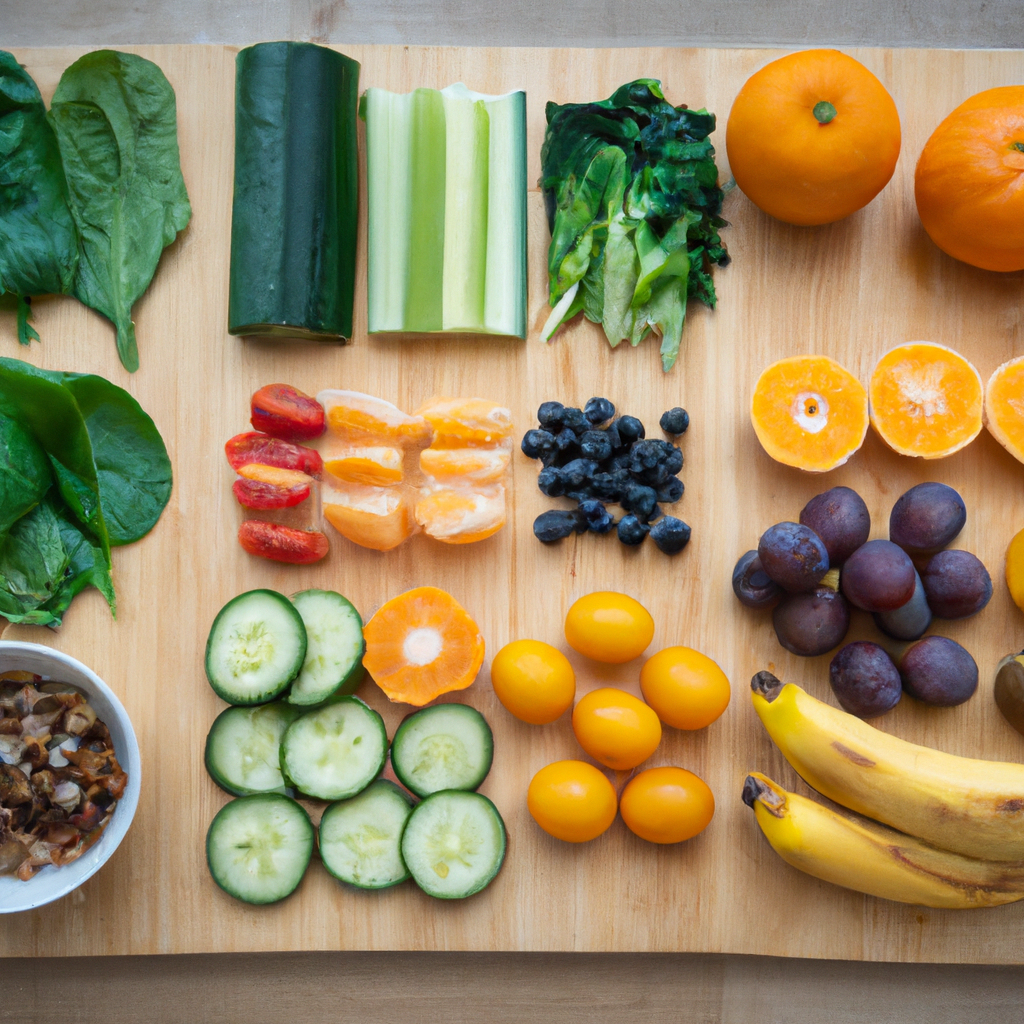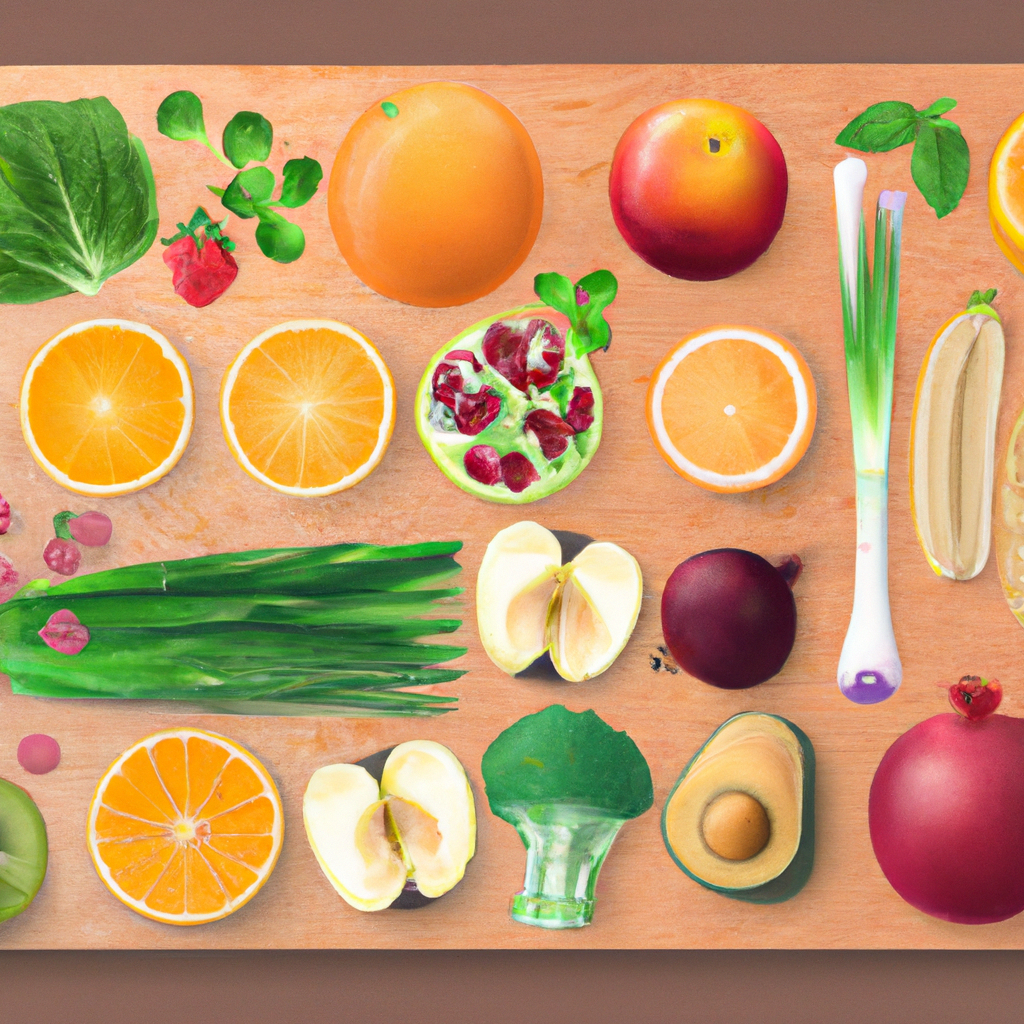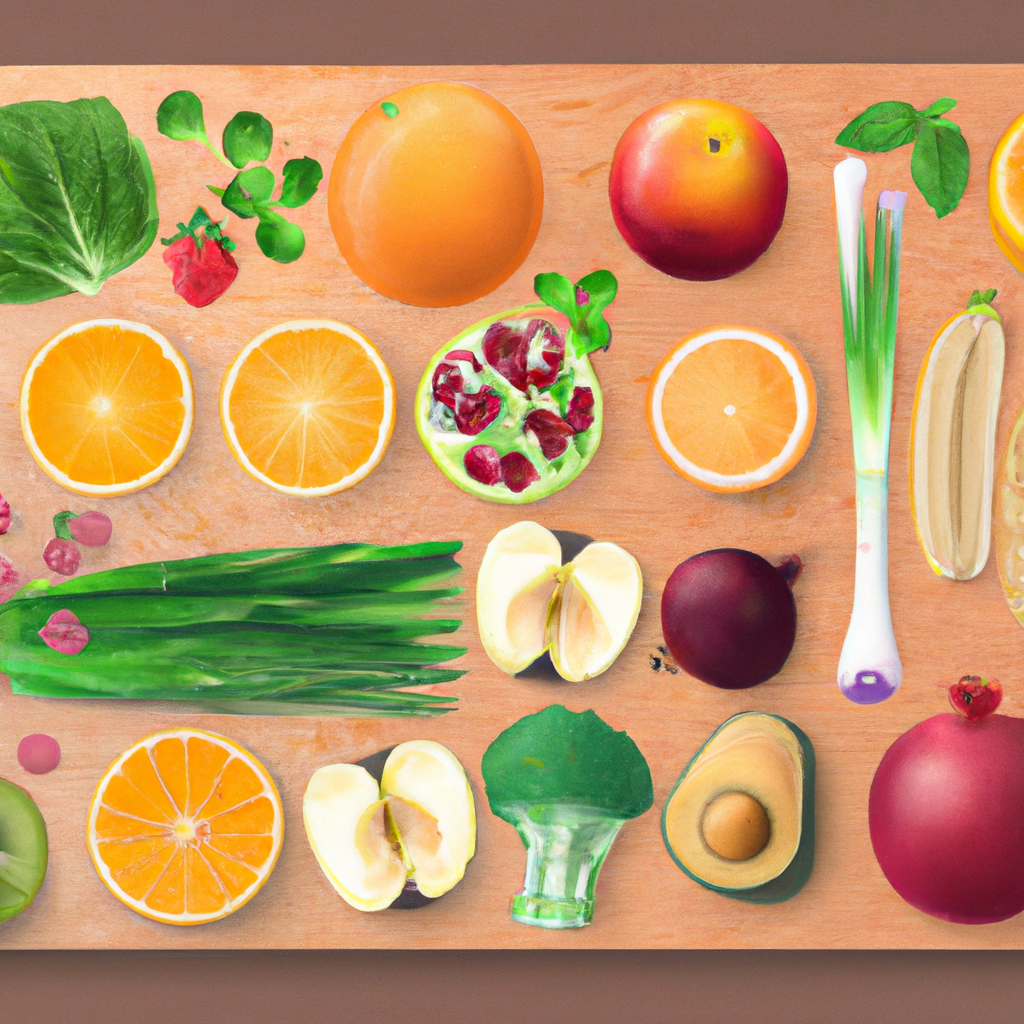Are you tired of struggling to stick to your meal plan? Look no further! In this article, you will discover useful tips and tricks to help you create a sustainable and realistic meal plan that actually works for you. From understanding portion sizes to incorporating a variety of nutritious foods, we’ve got you covered. Say goodbye to restrictive diets and hello to a healthy and balanced lifestyle. Let’s get started!
Determining Your Nutritional Needs
Calculating Your Calorie Intake
To create a sustainable and realistic meal plan, the first step is to determine your nutritional needs. One important aspect of this is calculating your calorie intake. Calories are a measure of the energy your body needs to function properly. To calculate your calorie intake, you can use an online calculator that takes into account factors such as your age, gender, weight, height, and activity level. This will give you an estimate of how many calories you need to maintain your current weight.
Assessing Your Macros
In addition to calories, it’s important to assess your macronutrient needs. Macronutrients, or macros, refer to carbohydrates, proteins, and fats. Each of these macronutrients plays a specific role in your body and has different calorie values. To determine your macros, you can use a macronutrient calculator. This will give you a breakdown of the percentage of each macronutrient that you should aim to include in your daily diet based on your goals, whether it is weight loss, muscle gain, or weight maintenance.
Considering Your Dietary Restrictions
When creating a meal plan, it is important to consider any dietary restrictions you may have. Whether you follow a specific diet due to health reasons, cultural beliefs, or personal choices, it’s crucial to factor these restrictions into your plan. This may mean finding alternatives or substitutes for certain ingredients, or exploring new recipes that align with your dietary needs. Taking your restrictions into account will help ensure that your meal plan is sustainable and enjoyable for you.
Setting Realistic Goals
Defining Your Objectives
To create a sustainable and realistic meal plan, it’s important to define your objectives. What are you hoping to achieve with your meal plan? Is it weight loss, muscle gain, improved energy levels, or better overall health? By clearly defining your goals, you can tailor your meal plan to meet your specific needs and set yourself up for success.
Taking Small Steps
When it comes to nutrition, it’s essential to take small steps towards your goals. Instead of completely overhauling your diet overnight, focus on making small, sustainable changes over time. This could involve gradually increasing your intake of fruits and vegetables, reducing your consumption of processed foods, or incorporating more whole grains into your meals. Taking small steps not only makes the transition easier but also increases the likelihood of long-term success.
Adopting a Long-Term Approach
Creating a sustainable and realistic meal plan requires adopting a long-term approach. Instead of viewing it as a temporary diet or restriction, think of it as a lifestyle change. This mindset shift can help you make healthier choices and stick to your meal plan in the long run. Remember that sustainable progress takes time and consistency, and by adopting a long-term approach, you’ll be able to achieve lasting results.

Meal Planning Basics
Understanding Portion Control
Understanding portion control is essential for creating a sustainable and realistic meal plan. Portion control refers to the amount of food you consume in a single sitting. It’s important to be mindful of portion sizes to ensure you’re not overeating or under-eating. One helpful tip is to use visual references, such as your hand or specific measuring cups, to estimate appropriate portion sizes. This can help you balance your meals and ensure that you’re getting the right amount of nutrients without overindulging.
Choosing Nutrient-Rich Foods
When planning your meals, it’s important to focus on choosing nutrient-rich foods. Nutrient-rich foods are those that provide a high amount of vitamins, minerals, and other essential nutrients relative to their calorie content. Examples of nutrient-rich foods include fruits, vegetables, whole grains, lean proteins, and healthy fats. By incorporating these foods into your meal plan, you can optimize your nutrient intake and support overall health and well-being.
Incorporating Varied Food Groups
Another key aspect of meal planning is incorporating varied food groups. Each food group contributes different nutrients to your diet, and a diverse range of food groups ensures that you’re getting a wide array of essential nutrients. Aim to include foods from all food groups, including fruits, vegetables, grains, proteins, and dairy or dairy alternatives. Experimenting with different recipes and flavors can help keep your meals interesting and enjoyable.
Planning Your Meals
Designing a Weekly Planning Schedule
To create a sustainable and realistic meal plan, it’s helpful to design a weekly planning schedule. Taking the time to plan your meals for the week can save you time and stress in the long run. Start by selecting recipes or meal ideas for each day and make a list of the ingredients you’ll need. Consider factors such as your schedule, dietary restrictions, and personal preferences when designing your schedule. With a clear plan in place, you’ll be more likely to stick to your meal plan and avoid resorting to unhealthy options.
Creating Balanced Meals
When planning your meals, strive to create balanced meals that include a combination of macronutrients and a variety of food groups. A balanced meal typically includes a source of lean protein, whole grains or starchy vegetables, and a generous portion of vegetables or fruits. This combination helps provide a well-rounded mix of nutrients and ensures that you’re fueling your body properly. Additionally, consider adding healthy fats and incorporating different flavors and textures to make your meals more enjoyable.
Taking Stock of Pantry and Fridge
Before heading to the grocery store, it’s important to take stock of your pantry and fridge. This allows you to see what ingredients you already have on hand and avoid unnecessary duplicates or food waste. Take note of any staple items that you’re running low on and make sure to include them on your grocery list. By incorporating what you already have into your meal planning, you can save time, money, and reduce food waste.

Grocery Shopping Tips
Preparing a Detailed Grocery List
When it comes to grocery shopping for your meal plan, preparation is key. Take the time to prepare a detailed grocery list before heading to the store. This list should include all the ingredients you’ll need for your planned meals, as well as any other pantry staples or personal care items. Having a well-prepared list helps you stay organized, ensures that you don’t forget any essential items, and reduces the temptation to make impulse purchases.
Opting for Whole Foods
When grocery shopping for your meal plan, it’s best to opt for whole foods whenever possible. Whole foods are minimally processed and retain their natural nutrients, making them a healthier choice. Include plenty of fruits, vegetables, whole grains, lean proteins, and healthy fats in your shopping cart. Avoid heavily processed foods that are often high in added sugars, unhealthy fats, and artificial ingredients. By choosing whole foods, you’ll be better able to meet your nutritional needs and support your overall health.
Shopping in Bulk
Another helpful grocery shopping tip is to consider shopping in bulk. Buying certain items in bulk can save you money and reduce packaging waste. Items such as grains, nuts, seeds, dried fruits, and legumes are often available in bulk sections of grocery stores. By purchasing larger quantities of these items, you can stock up on pantry staples and have them readily available for your meal planning needs.
Meal Prep Methods
Batch Cooking
To create a sustainable and realistic meal plan, consider incorporating batch cooking into your routine. Batch cooking involves preparing larger quantities of food at one time and portioning it out for future meals. This can save you time and effort throughout the week, as you’ll already have meals or meal components ready to go. Choose a day or two each week to dedicate to batch cooking, and cook large batches of grains, proteins, and roasted vegetables. This way, you can simply assemble meals or reheat pre-cooked components when you’re short on time.
Freezing Meals and Ingredients
Another effective meal prep method is freezing meals and ingredients. By freezing meals, you can have a variety of options readily available, especially for busy days or when unexpected events arise. Consider preparing larger batches of soups, stews, casseroles, or sauces and freezing individual portions. Additionally, you can freeze ingredients such as chopped vegetables, fruits, or cooked grains to use in future meals. This allows you to reduce food waste and have a wide range of ingredients and meals at your disposal.
Utilizing Leftovers
Don’t let leftovers go to waste – instead, utilize them as part of your meal planning strategy. Leftovers can be repurposed into new meals or enjoyed as is for quick and easy meals. For example, leftover roasted chicken can be used to make a delicious chicken salad, or leftover vegetables can be added to omelets, wraps, or stir-fries. By creatively using leftovers, you can minimize food waste and save both time and money.
Building a Flexible Menu
Incorporating Variety
When planning your meals, it’s important to incorporate variety into your menu. Eating a variety of foods not only ensures that you’re getting a wide range of nutrients but also keeps your meal plan interesting and enjoyable. Experiment with different types of fruits, vegetables, grains, proteins, and spices to add new flavors and textures to your meals. Don’t be afraid to try new recipes or ingredients to keep your taste buds excited.
Experimenting with New Recipes
Adding new recipes to your meal plan can help prevent boredom and increase your enjoyment of healthy eating. Look for recipes that align with your nutritional needs and personal preferences. Try out different cooking techniques, explore different cultural cuisines, and experiment with new ingredients. By expanding your culinary repertoire, you’ll be more likely to stick to your meal plan and avoid falling into a monotonous routine.
Accounting for Special Occasions
While it’s important to maintain a sustainable and realistic meal plan, it’s also crucial to account for special occasions or events. Birthdays, holidays, and social gatherings often involve food that may not align with your regular meal plan. However, it’s important to allow yourself flexibility and enjoy these special occasions without guilt. Moderation and balance are key. If you know you have a special event coming up, plan your other meals accordingly and ensure that you’re meeting your nutritional needs overall.
Making Smart Beverage Choices
Opting for Water
When it comes to beverages, one of the smartest choices you can make is drinking water. Water is essential for hydration, and it has zero calories and no added sugars. Whether you’re at home, work, or on the go, make it a habit to always have a water bottle with you. Drinking an adequate amount of water throughout the day can help support your overall health and well-being.
Limiting Sugary Beverages
It’s important to limit your consumption of sugary beverages when creating a sustainable and realistic meal plan. Beverages such as soda, fruit juices, sports drinks, and flavored coffee or tea often contain added sugars and can contribute to excess calorie intake. Opt for healthier alternatives such as unsweetened tea, infused water, or sparkling water with a splash of citrus. If you do choose to indulge in sugary beverages occasionally, do so in moderation and be mindful of portion sizes.
Considering Alcohol Consumption
While it’s important to enjoy life and socialize, it’s also crucial to consider the impact of alcohol consumption on your meal plan. Alcoholic beverages can be high in calories and may also affect your judgment and food choices. If you choose to drink alcohol, do so in moderation and be mindful of portion sizes. Additionally, consider opting for lower calorie options such as light beer, wine spritzers, or mixed drinks made with soda water or fresh fruit juice.
Eating Out and Social Events
Navigating Restaurant Menus
Eating out can sometimes be challenging when adhering to a meal plan, but it’s not impossible. When dining at a restaurant, take the time to review the menu beforehand if possible. Look for healthier options that align with your nutritional needs, such as grilled proteins, steamed vegetables, or whole grain options. Be mindful of portion sizes and consider sharing a dish with a friend or asking for a take-out container to save leftovers for another meal. Remember that you can always customize your order to fit your dietary preferences and restrictions.
Choosing Healthier Options
Even at social events or gatherings where food choices may be limited, there are usually healthier options available. Look for dishes that are prepared with healthy cooking methods, such as grilled, roasted, or baked options. Load up on vegetables if they are available, and be mindful of dressings or sauces that may be high in added sugars or unhealthy fats. Remember that small indulgences are okay, but try to focus on choosing healthier options overall to maintain a balanced and sustainable meal plan.
Planning Ahead for Gatherings
When attending social events or gatherings, it’s helpful to plan ahead to ensure you can stick to your meal plan as much as possible. If you know that the event will include a buffet or potluck-style meal, consider bringing a dish that aligns with your dietary preferences and restrictions. This way, you’ll have a guaranteed healthier option available. If you’re unsure about the food options that will be available, consider having a small, balanced meal or snack before the event to curb your hunger and prevent overindulgence.
Monitoring and Adjusting
Keeping a Food Diary
Monitoring your food intake is a helpful way to stay accountable and ensure that you’re sticking to your meal plan. Keeping a food diary can help you track what you eat, how much you eat, and how it makes you feel. It allows you to identify any patterns or areas for improvement and provides insight into your nutritional choices. There are various apps and online tools available that make food tracking and meal planning easier. By regularly reviewing your food diary, you can make necessary adjustments and continue on your journey towards a sustainable and realistic meal plan.
Tracking Progress
In addition to monitoring your food intake, it’s important to track your progress. This can involve tracking your weight, body measurements, energy levels, or even specific health markers with the help of a healthcare professional. Tracking your progress helps you identify trends and patterns, and allows you to celebrate successes and make necessary adjustments along the way. Remember that progress is not always linear, and it’s important to focus on overall health and well-being rather than solely on the numbers.
Making Necessary Adjustments
Creating a sustainable and realistic meal plan is an ongoing process that requires making necessary adjustments along the way. As you track your progress and learn more about your body’s nutritional needs, you may need to tweak your meal plan to better meet your goals. This could involve adjusting portion sizes, modifying your macronutrient ratios, or incorporating new foods or recipes. Don’t be afraid to experiment and adapt your meal plan as needed to ensure that it remains sustainable and enjoyable for you.
In conclusion, creating a sustainable and realistic meal plan involves determining your nutritional needs, setting realistic goals, and planning and preparing nutritious meals. By assessing your calorie intake, macronutrient needs, and dietary restrictions, you can create a meal plan that meets your specific needs. Setting realistic goals, taking small steps, and adopting a long-term approach ensure that your meal plan is sustainable. Understanding portion control, choosing nutrient-rich foods, and incorporating varied food groups form the basics of meal planning. Planning your meals, grocery shopping with a detailed list, and utilizing meal prep methods make meal preparation more efficient and enjoyable. Building a flexible menu, making smart beverage choices, and navigating eating out and social events help you maintain your meal plan in different situations. Lastly, monitoring and adjusting your plan, keeping a food diary, tracking progress, and making necessary adjustments ensure the sustainability and effectiveness of your meal plan. With these strategies in place, you can create a meal plan that supports your overall health and well-being for the long term.



